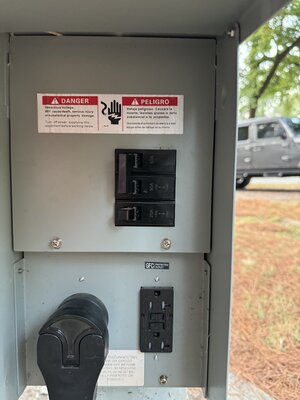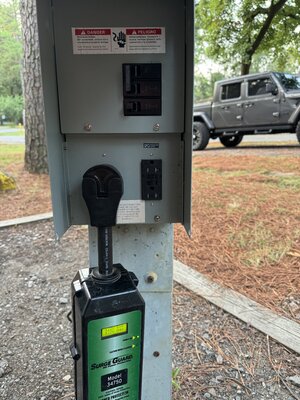Stuart W
RVF Supporter
- Joined
- Nov 2, 2019
- Messages
- 640
- RV Year
- 2025
- RV Make
- Newmar
- RV Model
- London Aire 4595 FL SL605
- RV Length
- 45
- Chassis
- FL
- Engine
- Cummins
- TOW/TOAD
- Jeep Wrangler
Here we are in a KOA campground in Little Rock Arkansas and we were having a problem with the pedestal popping the 50 Amp double breaker. Two 50 amp breakers connected together. So one camp guy comes out and resets the breaker and says he will have his boss come out, he’s an electrician. The boss comes out and explains to me that the two legs are only 25 amps each and that makes 50 amp service. I asked why the breakers are marked 50 each and he said that’s because it’s a 50 amp service. Lucky it’s just over night














